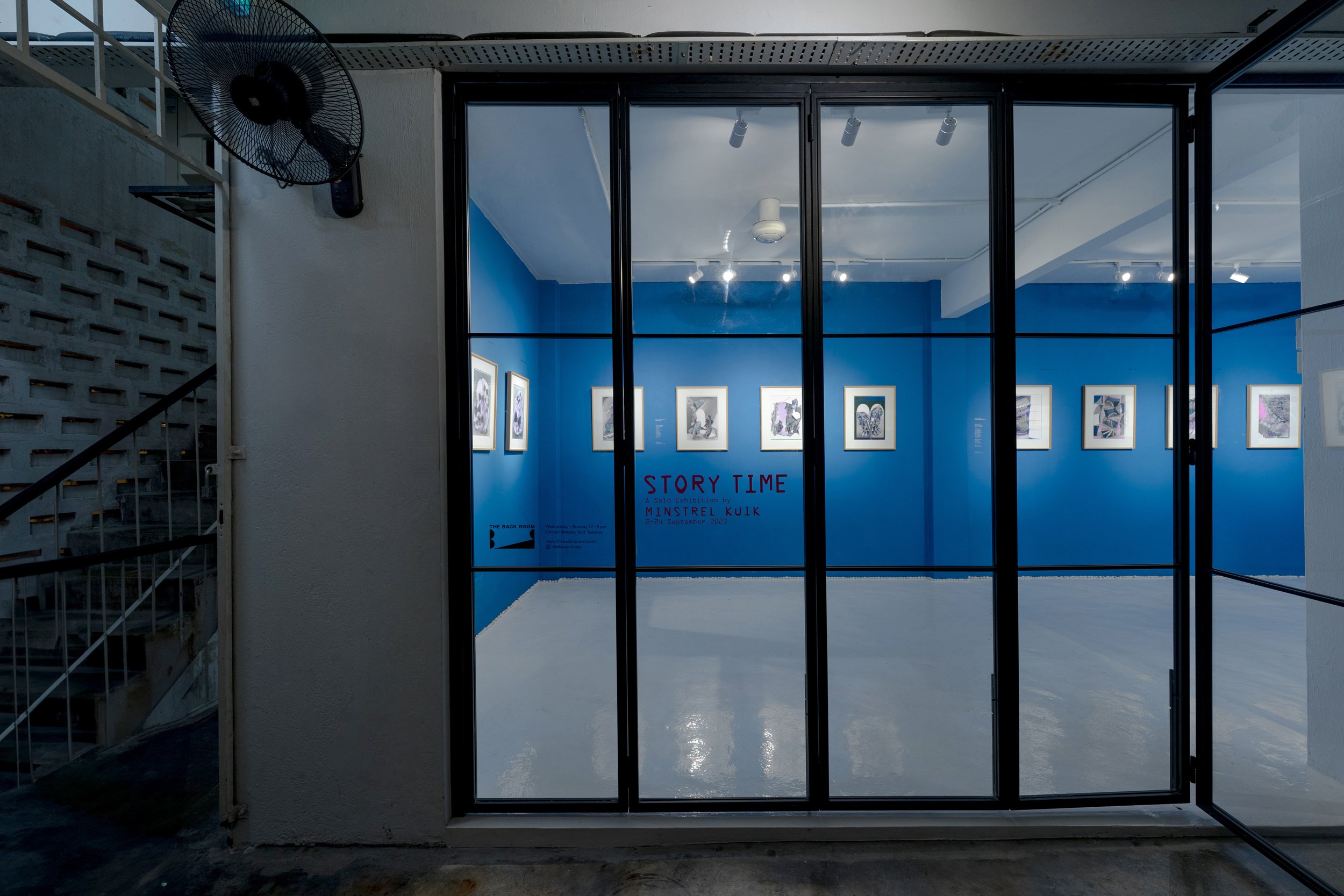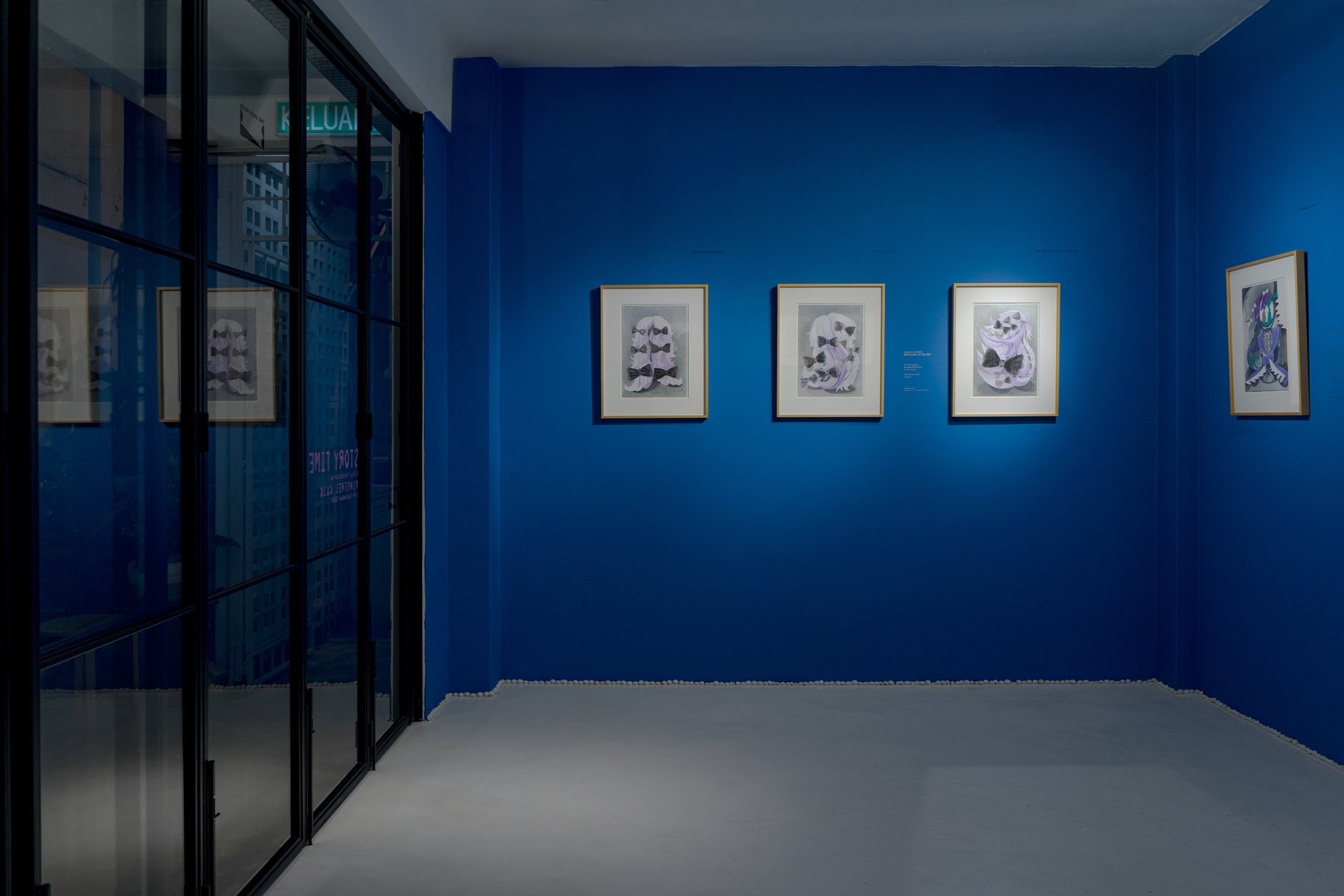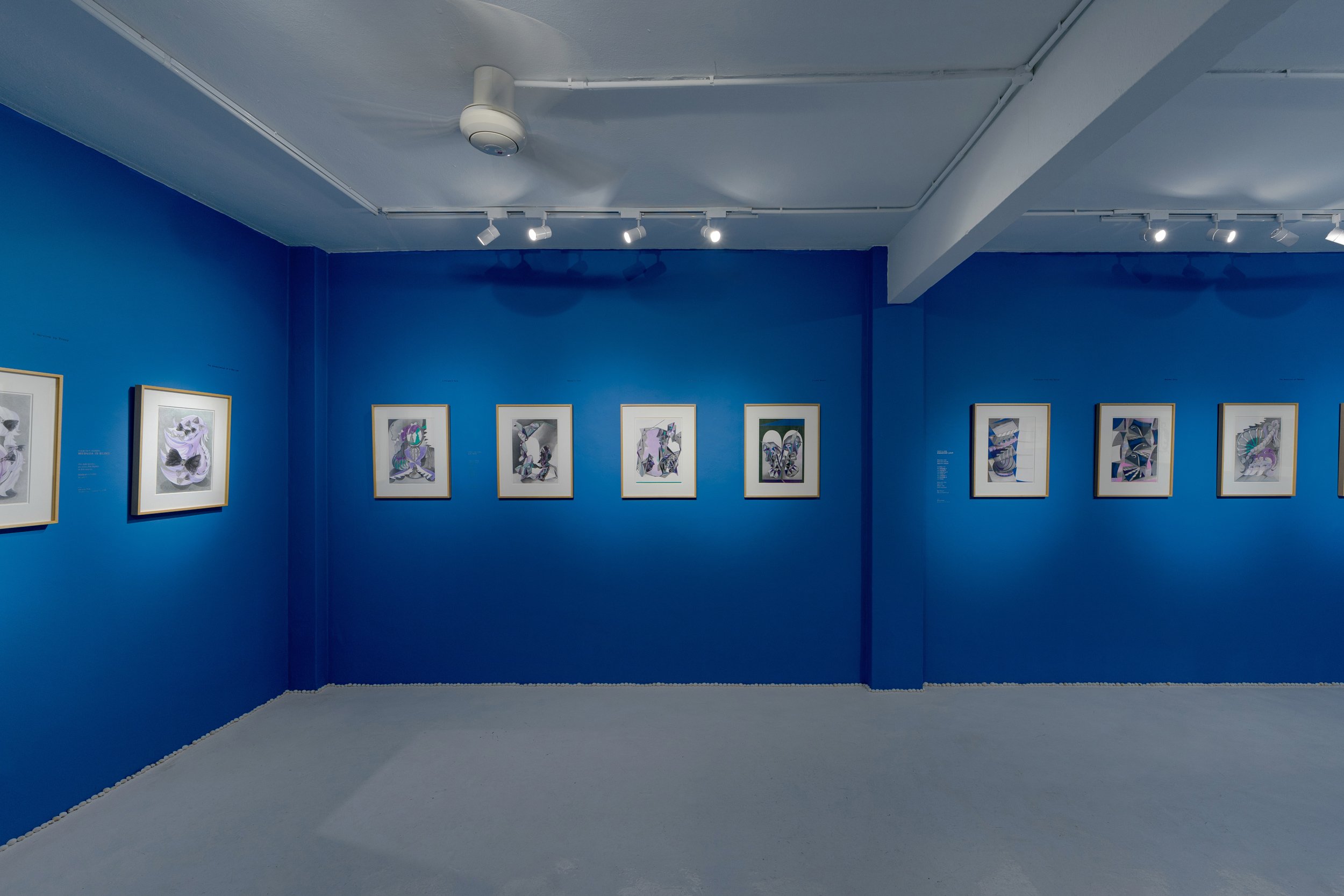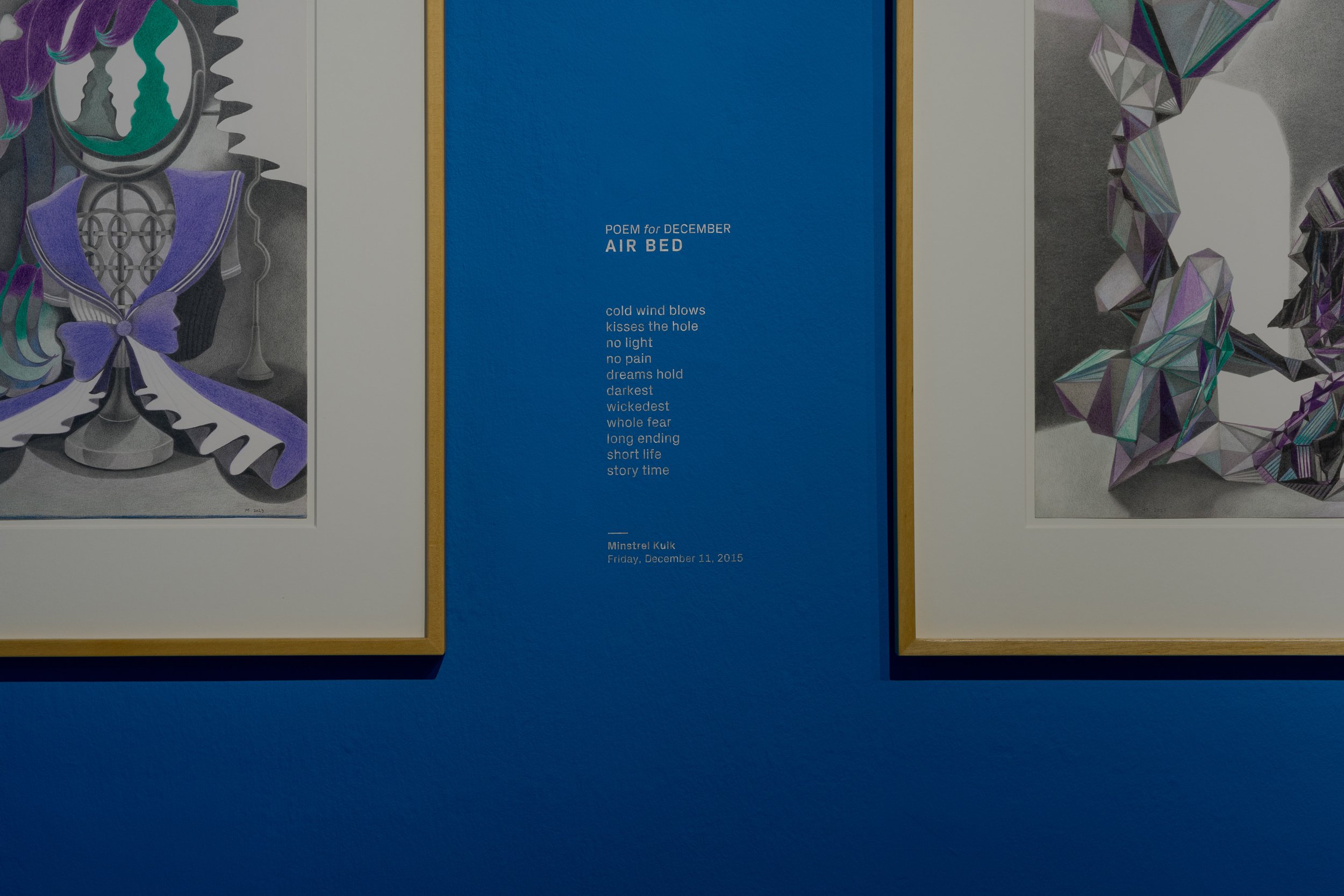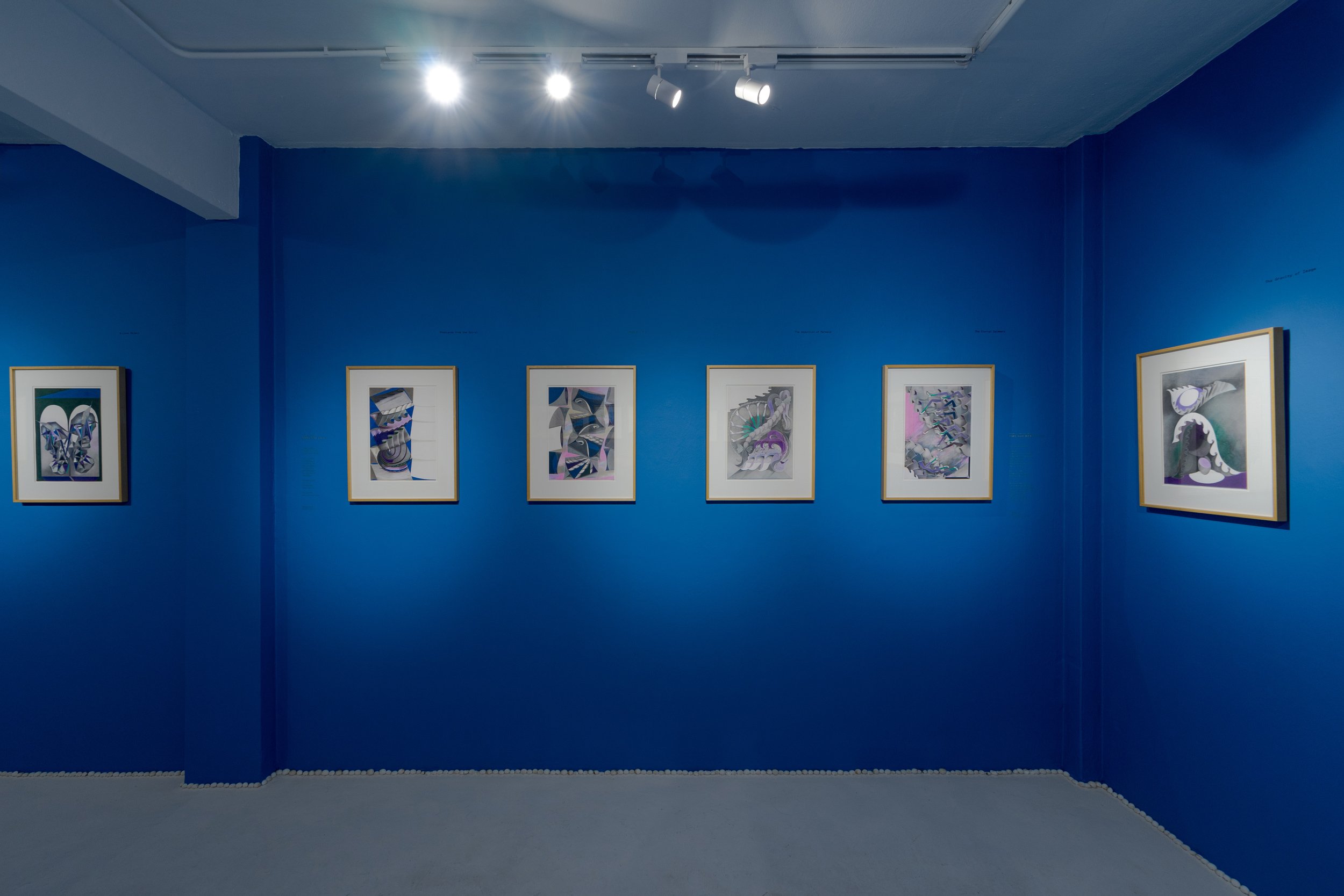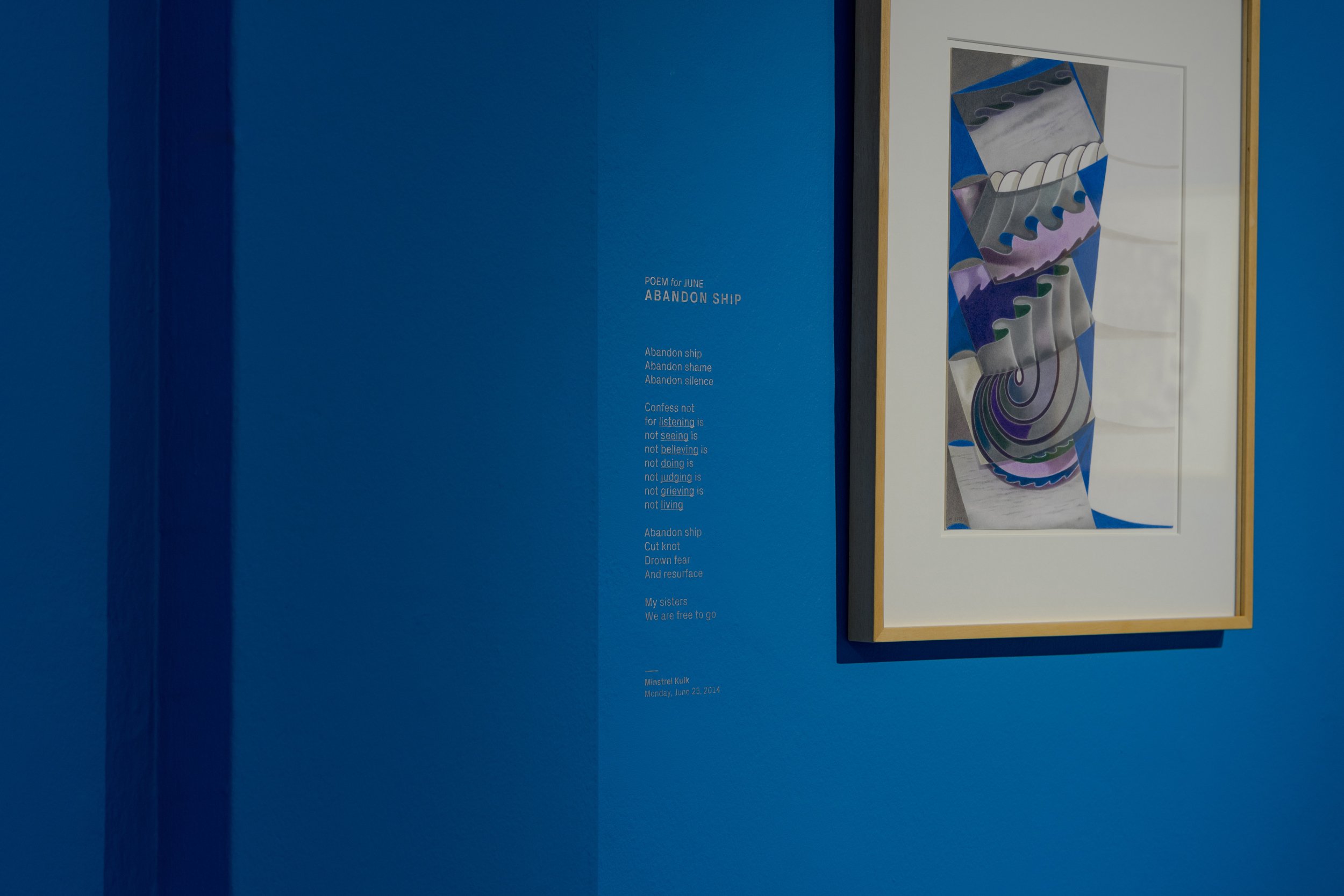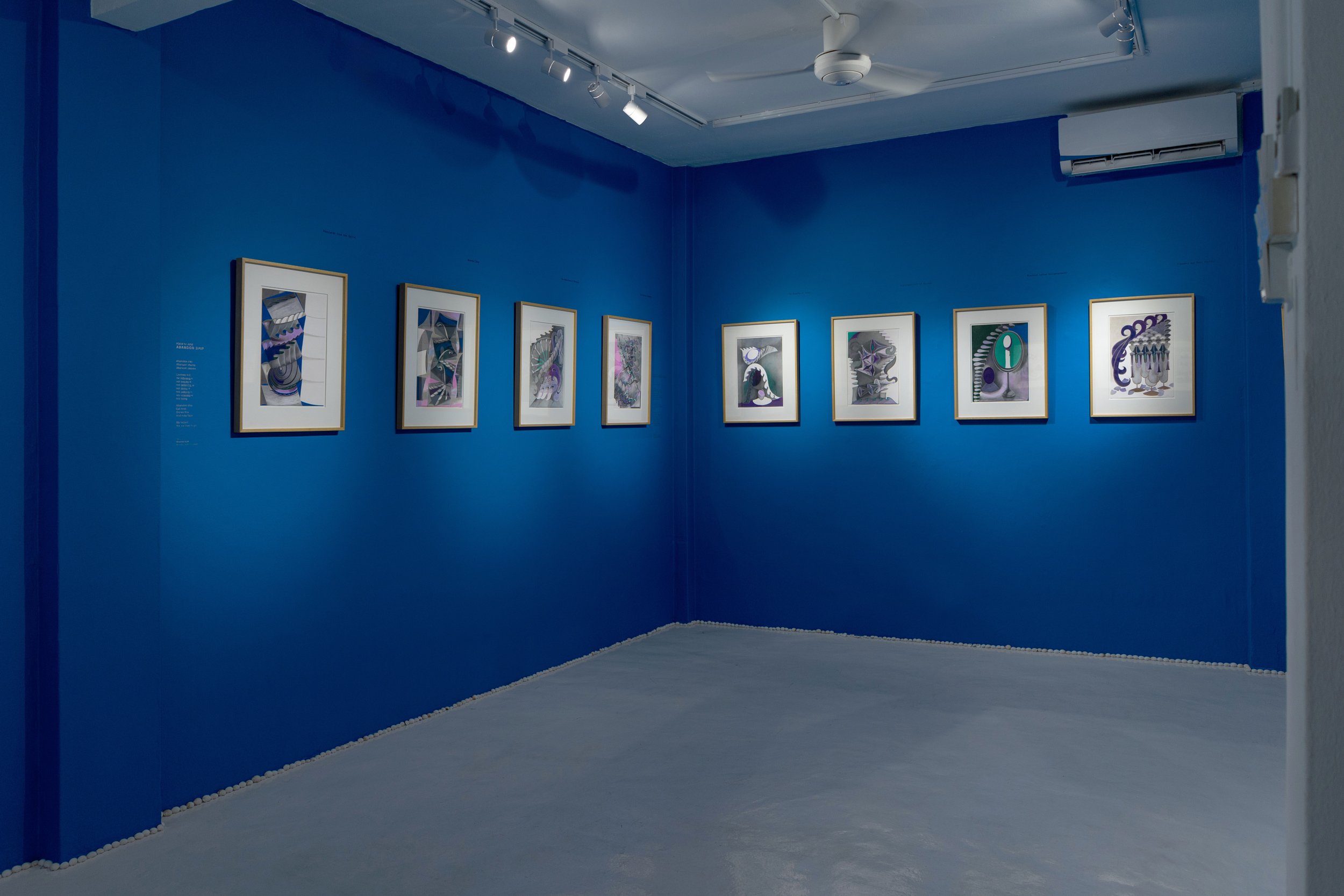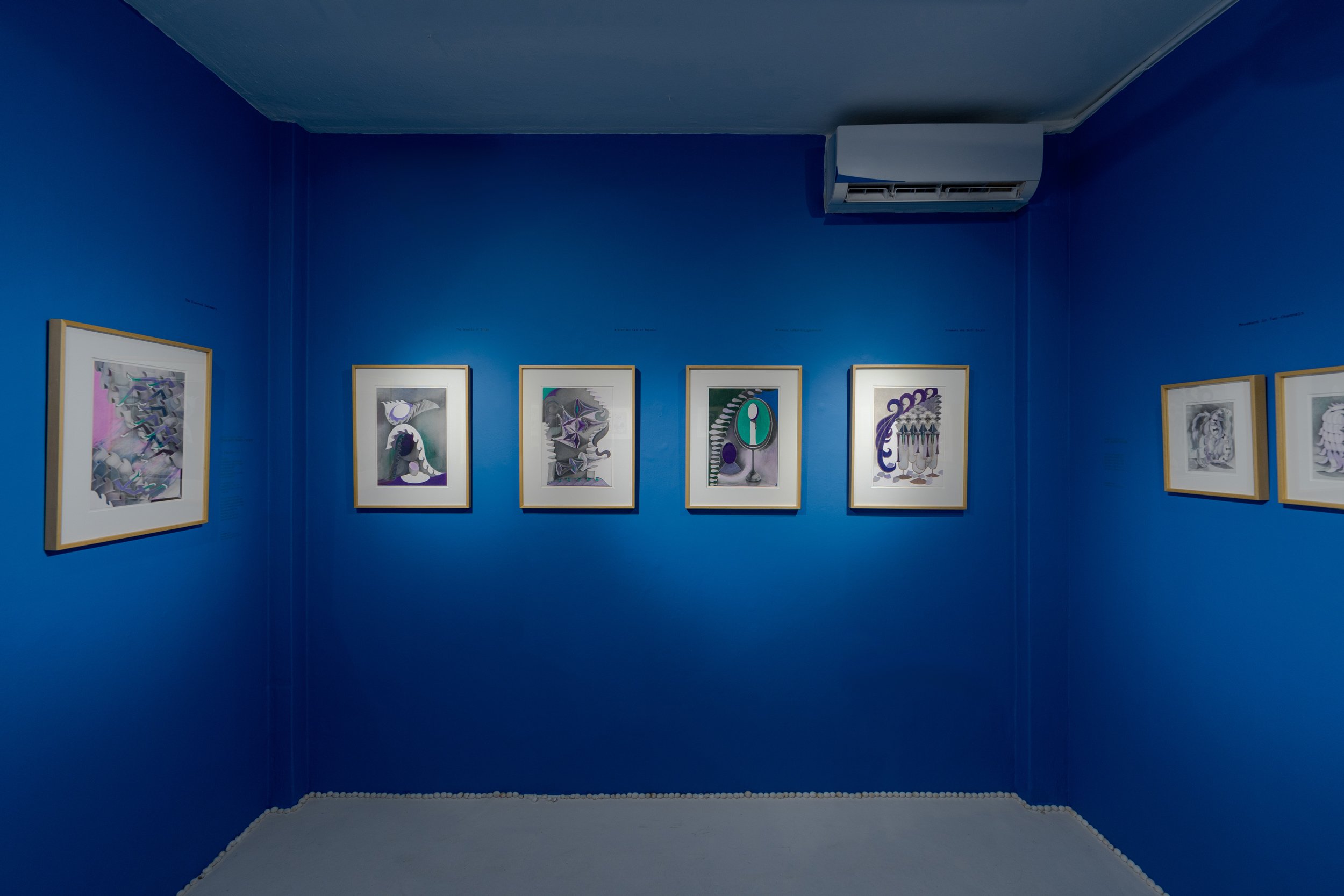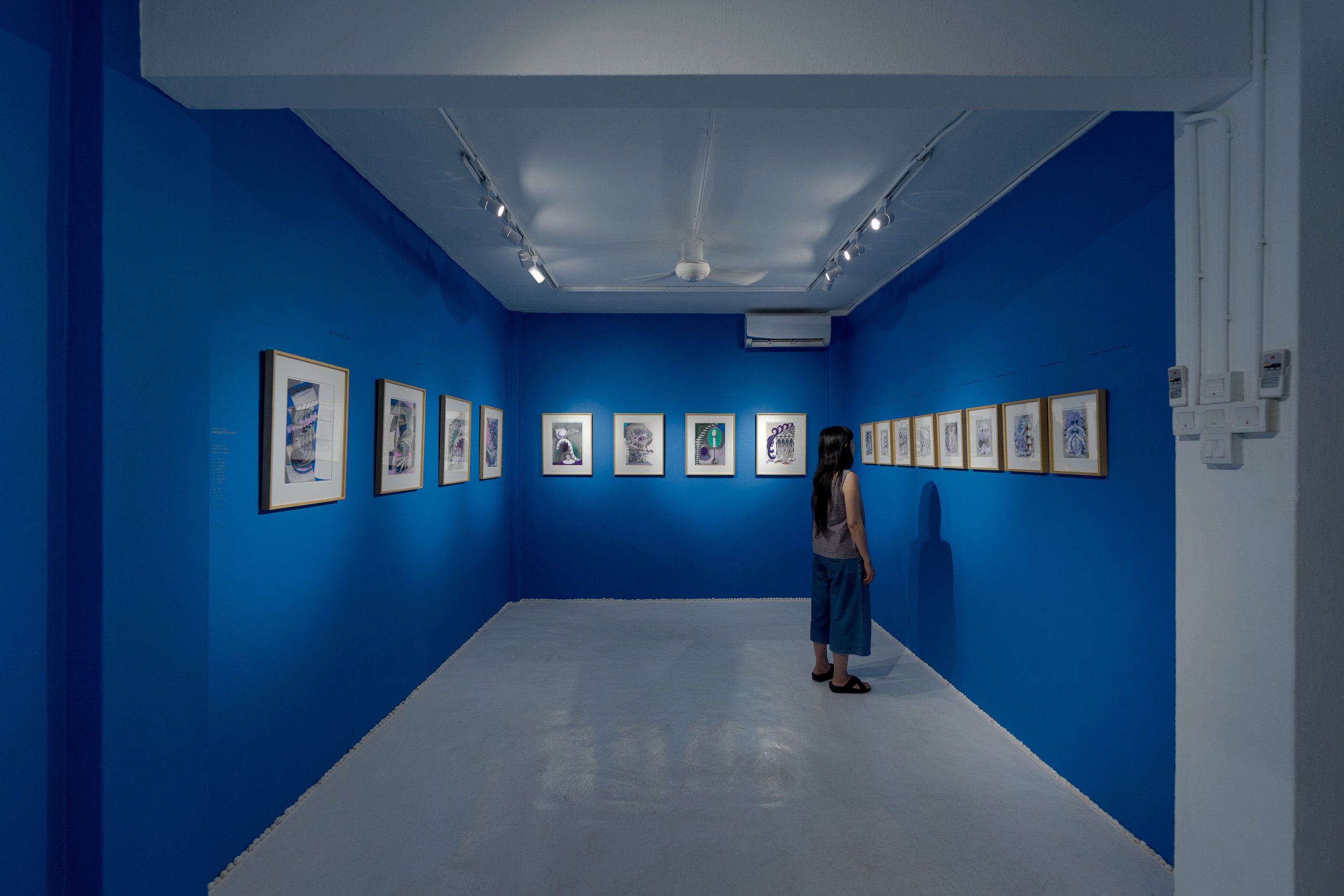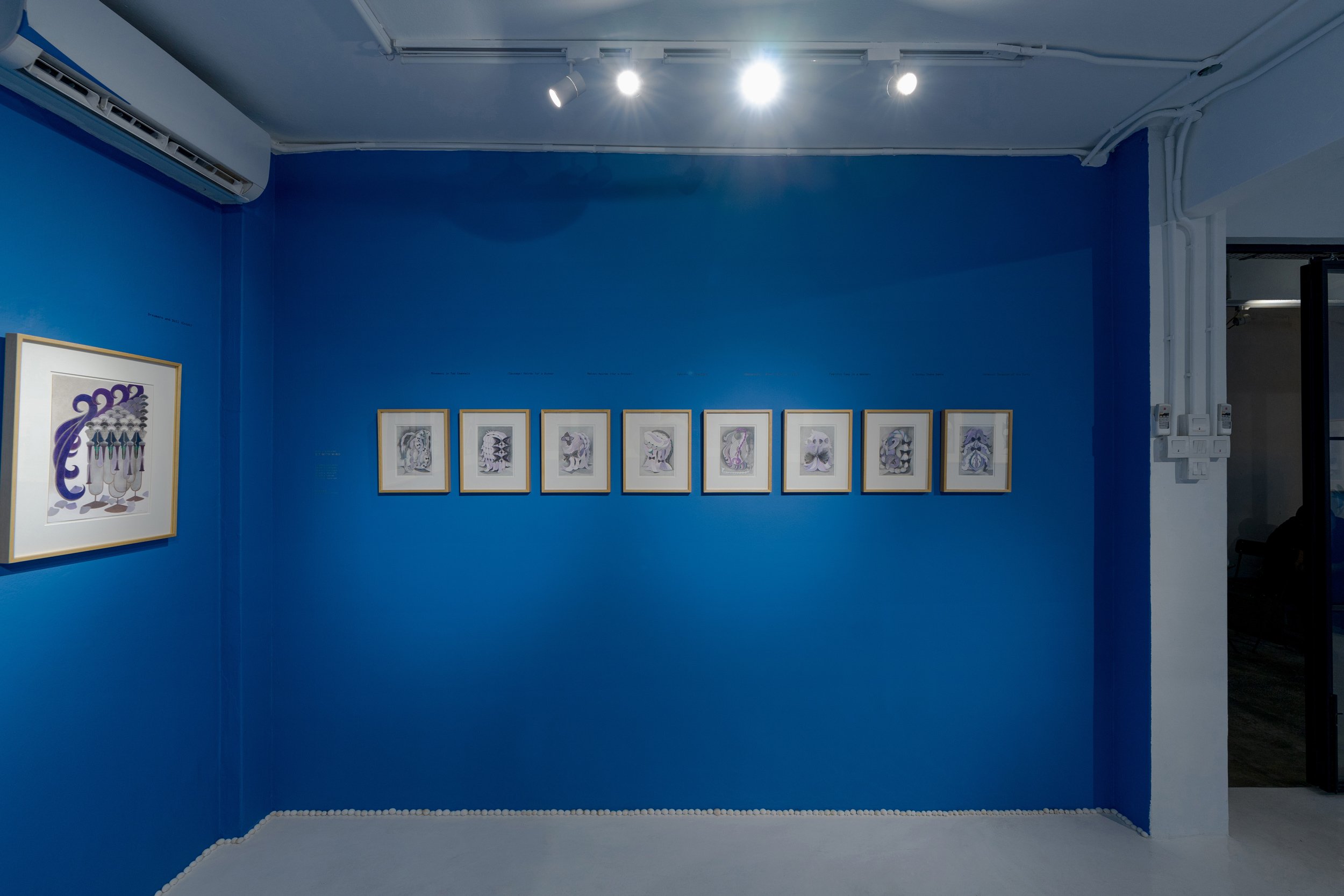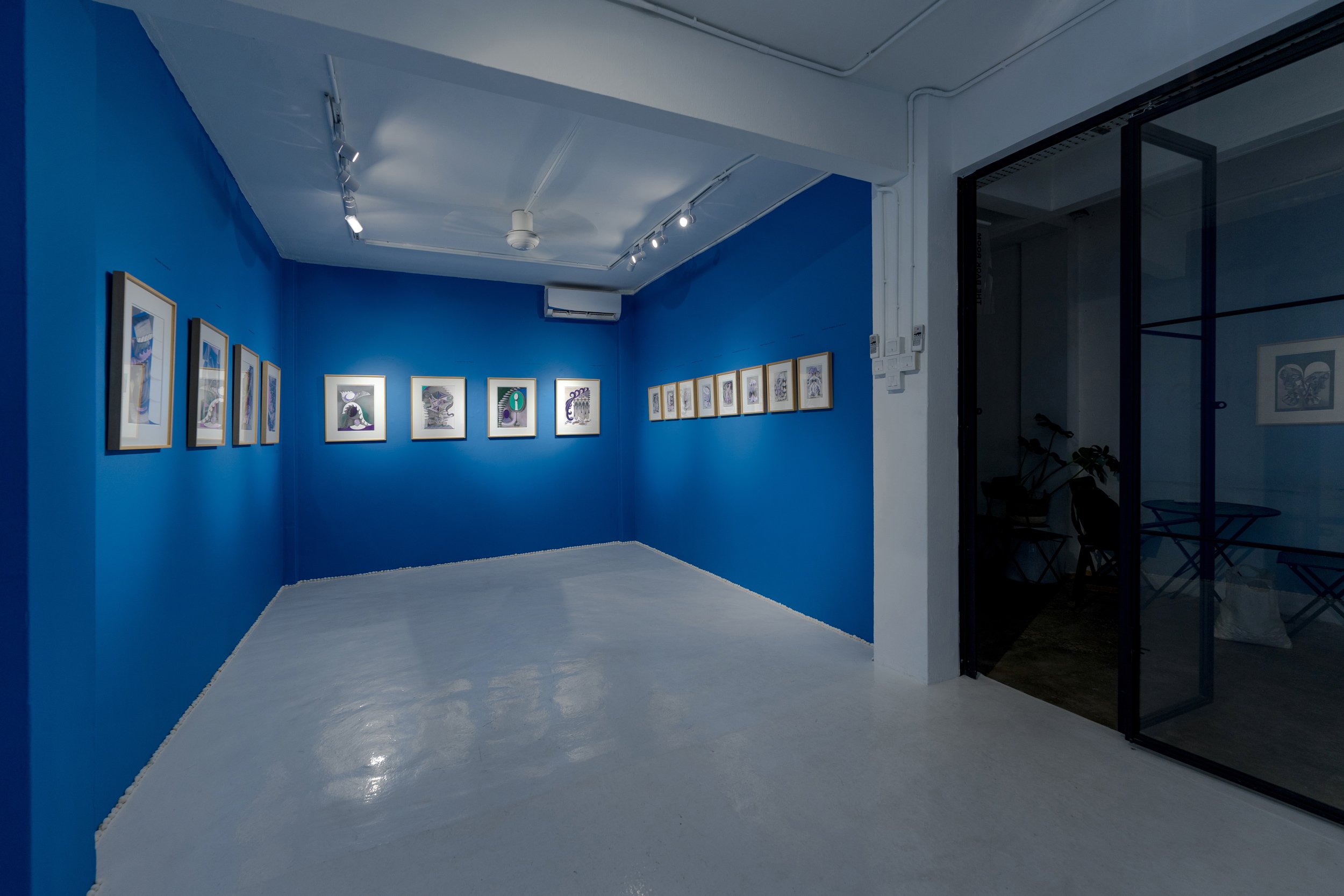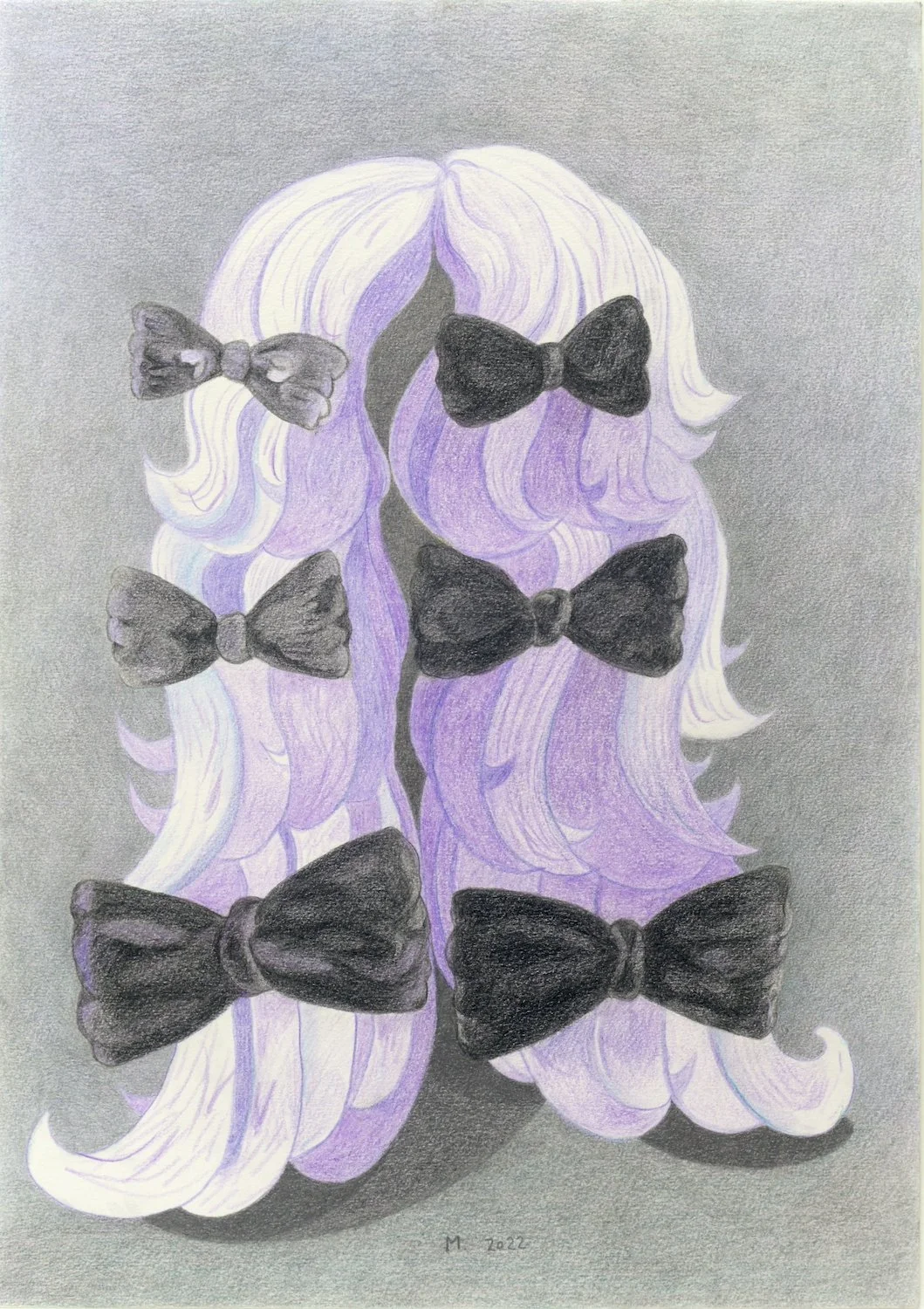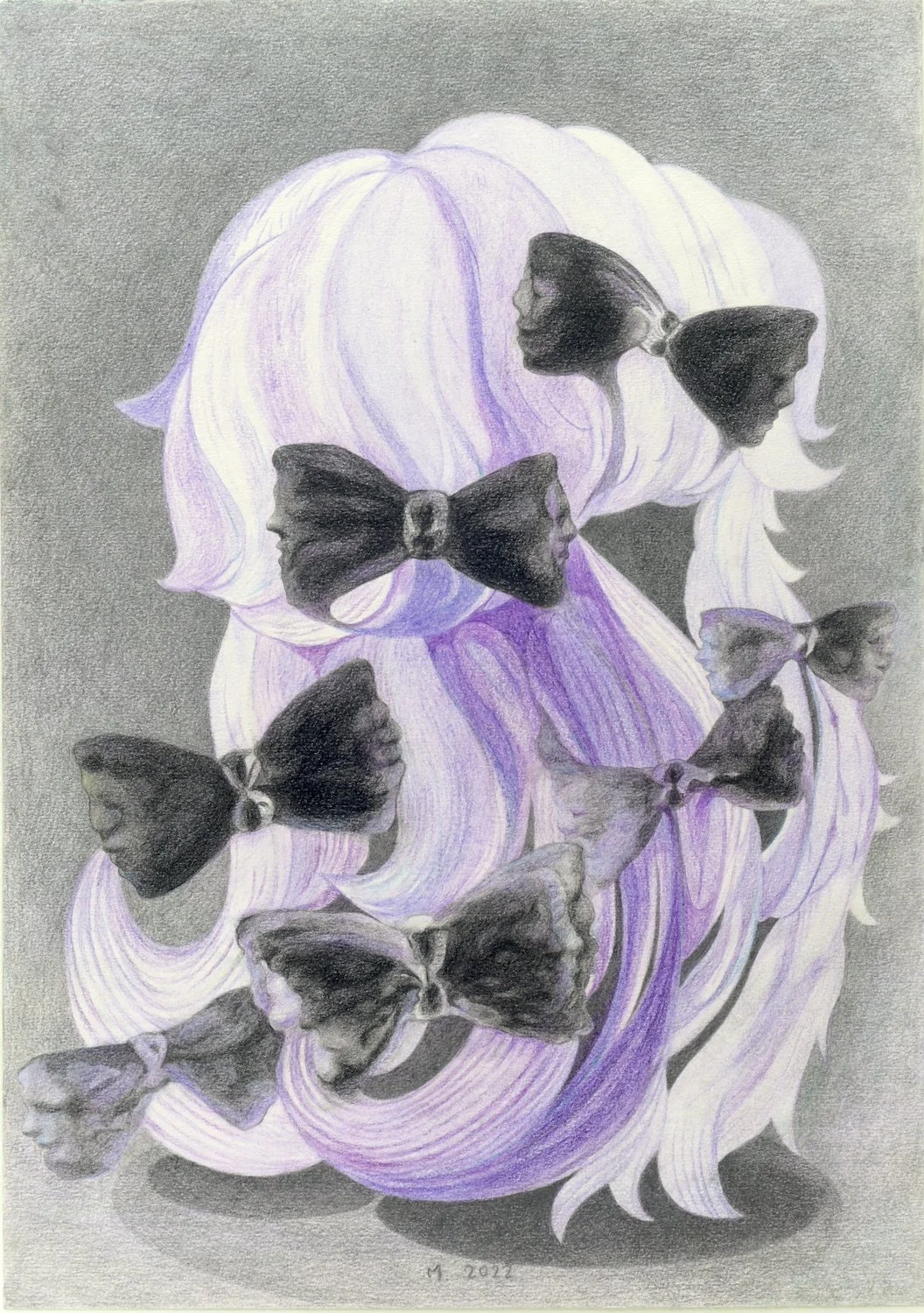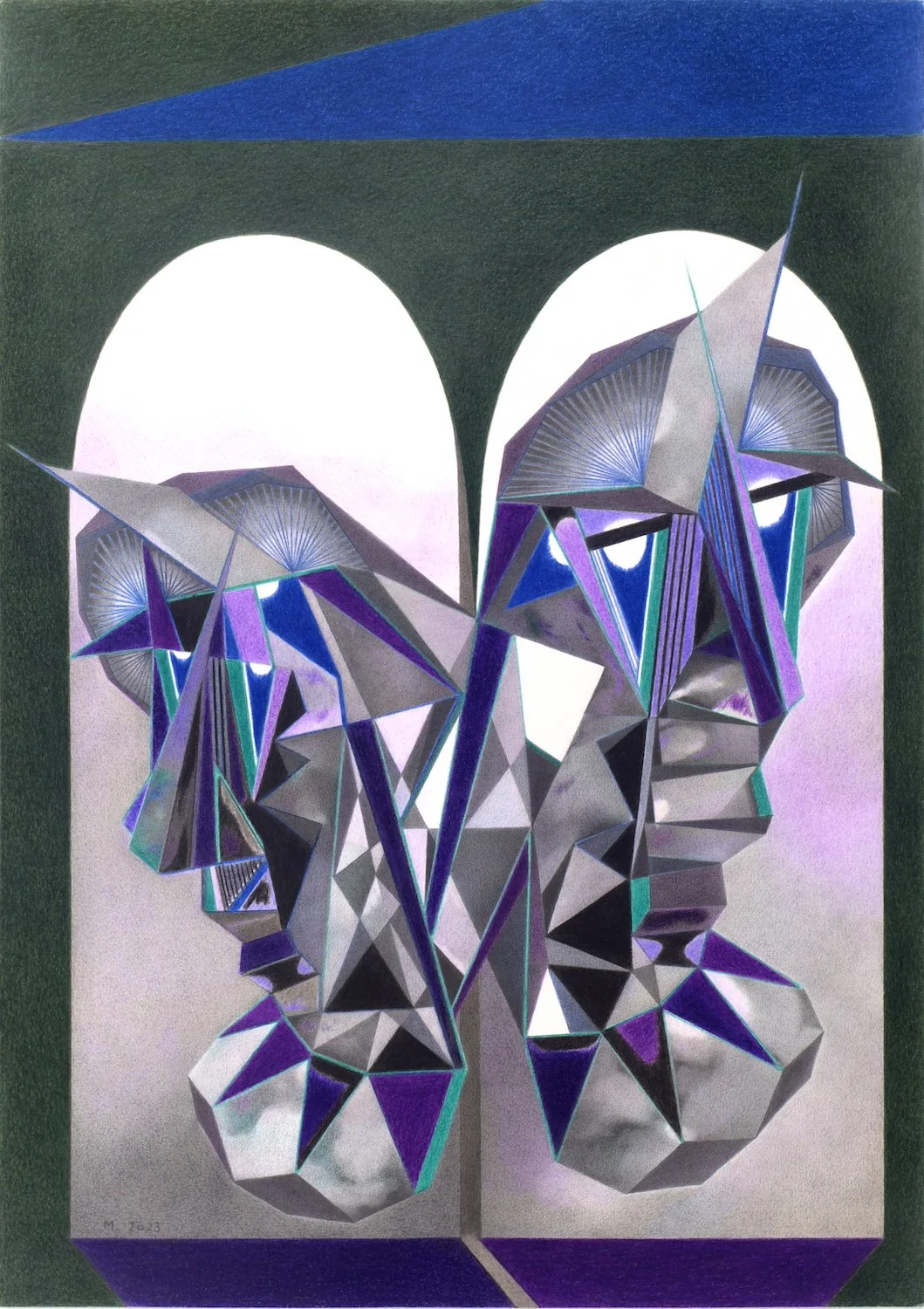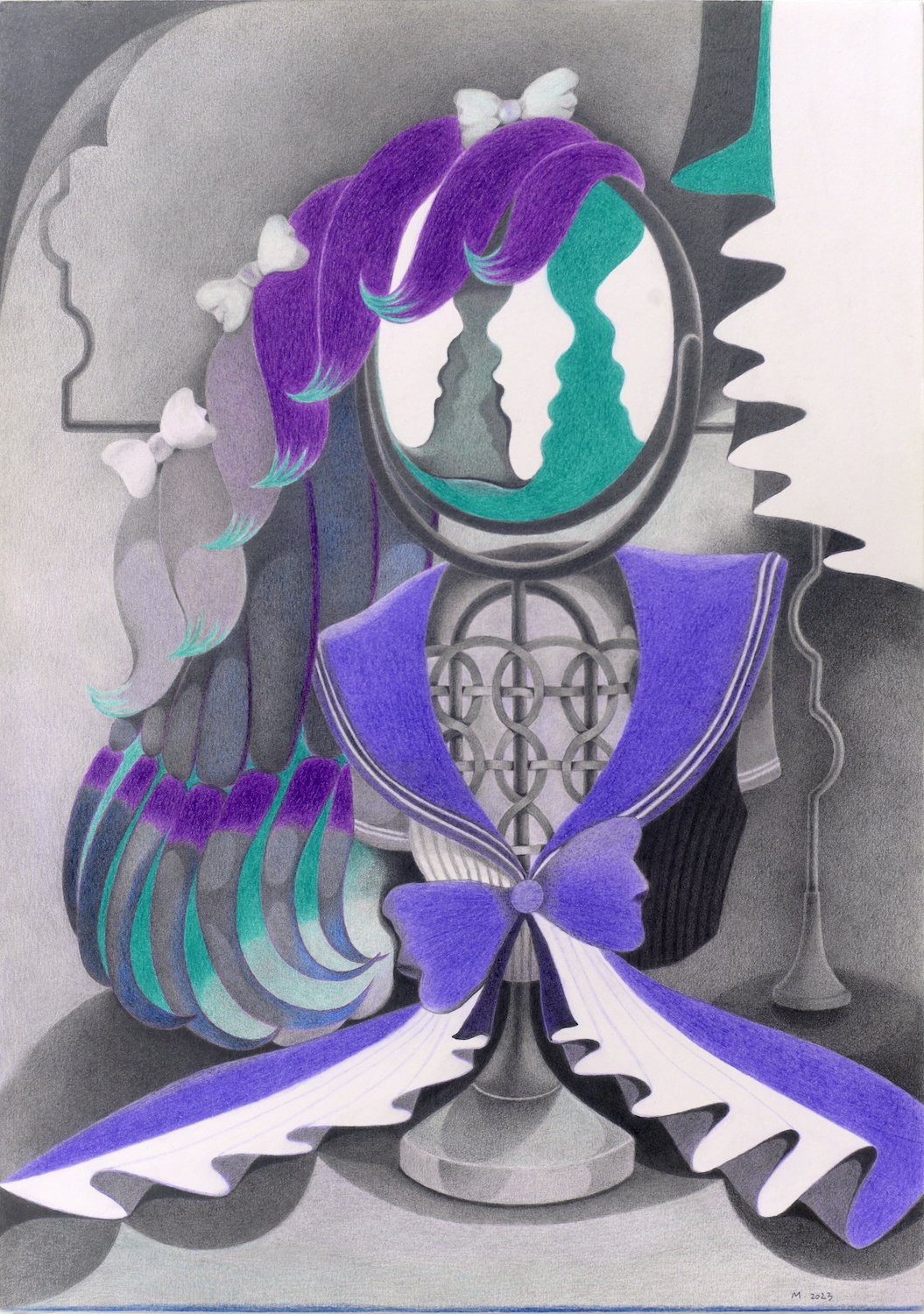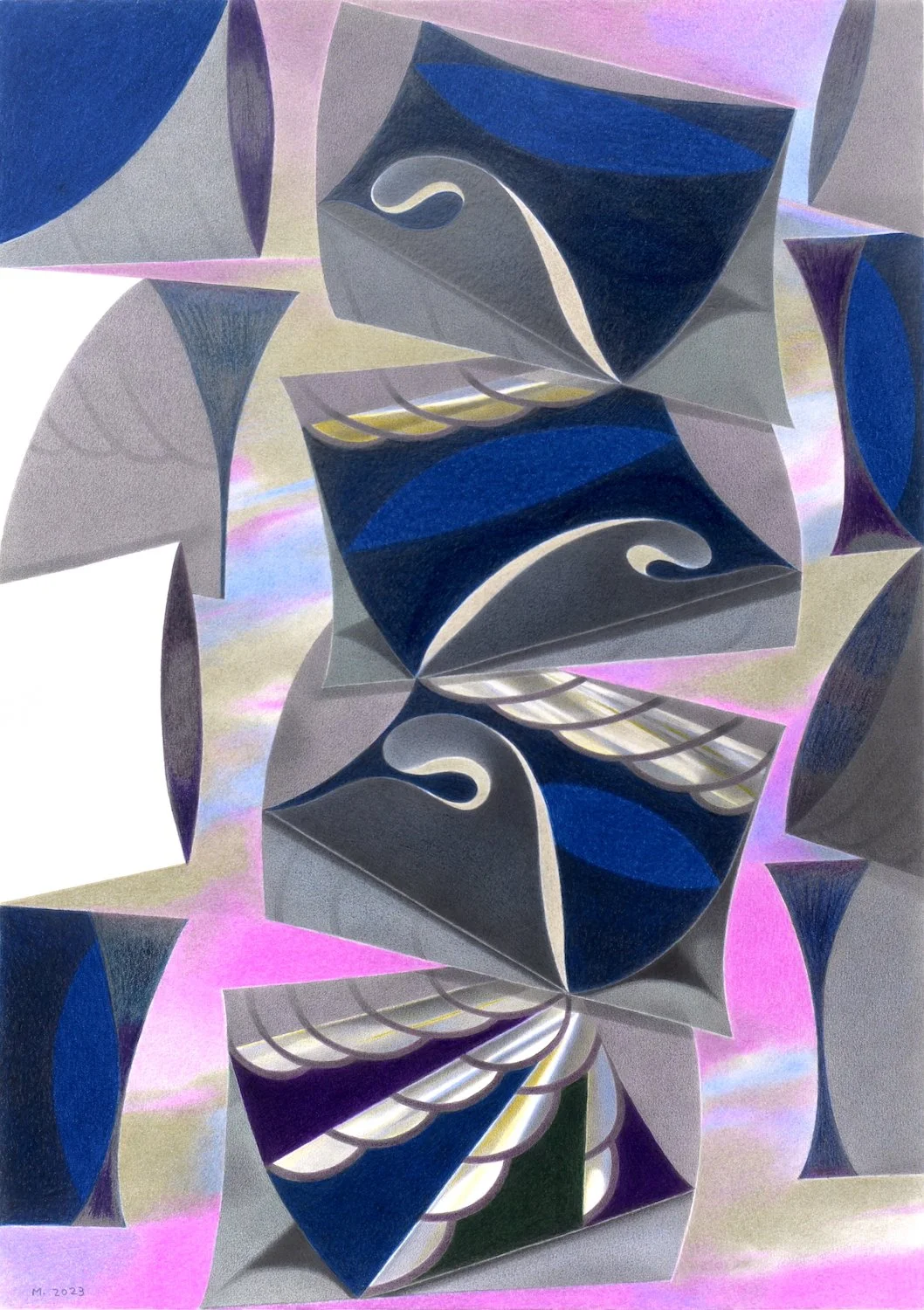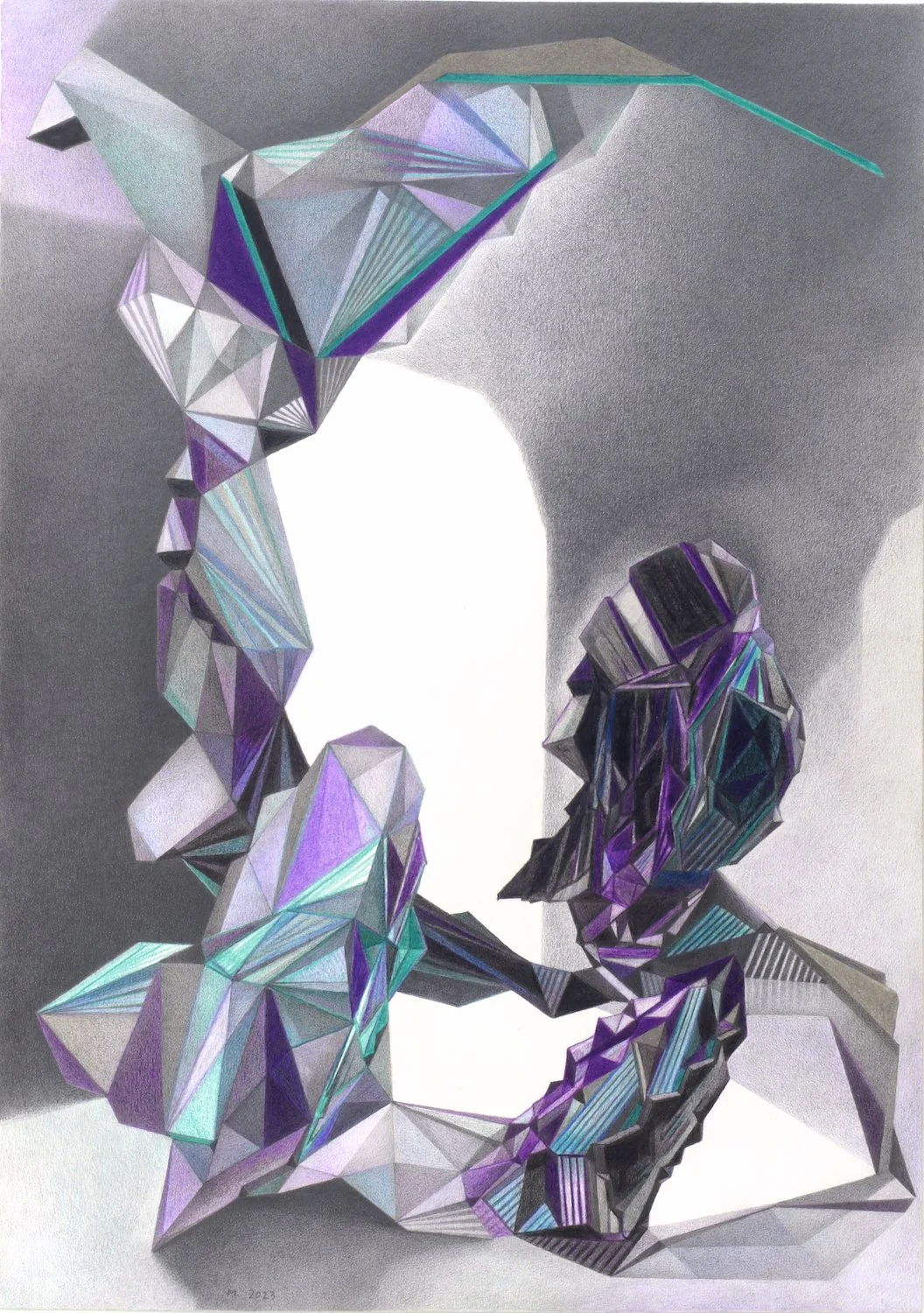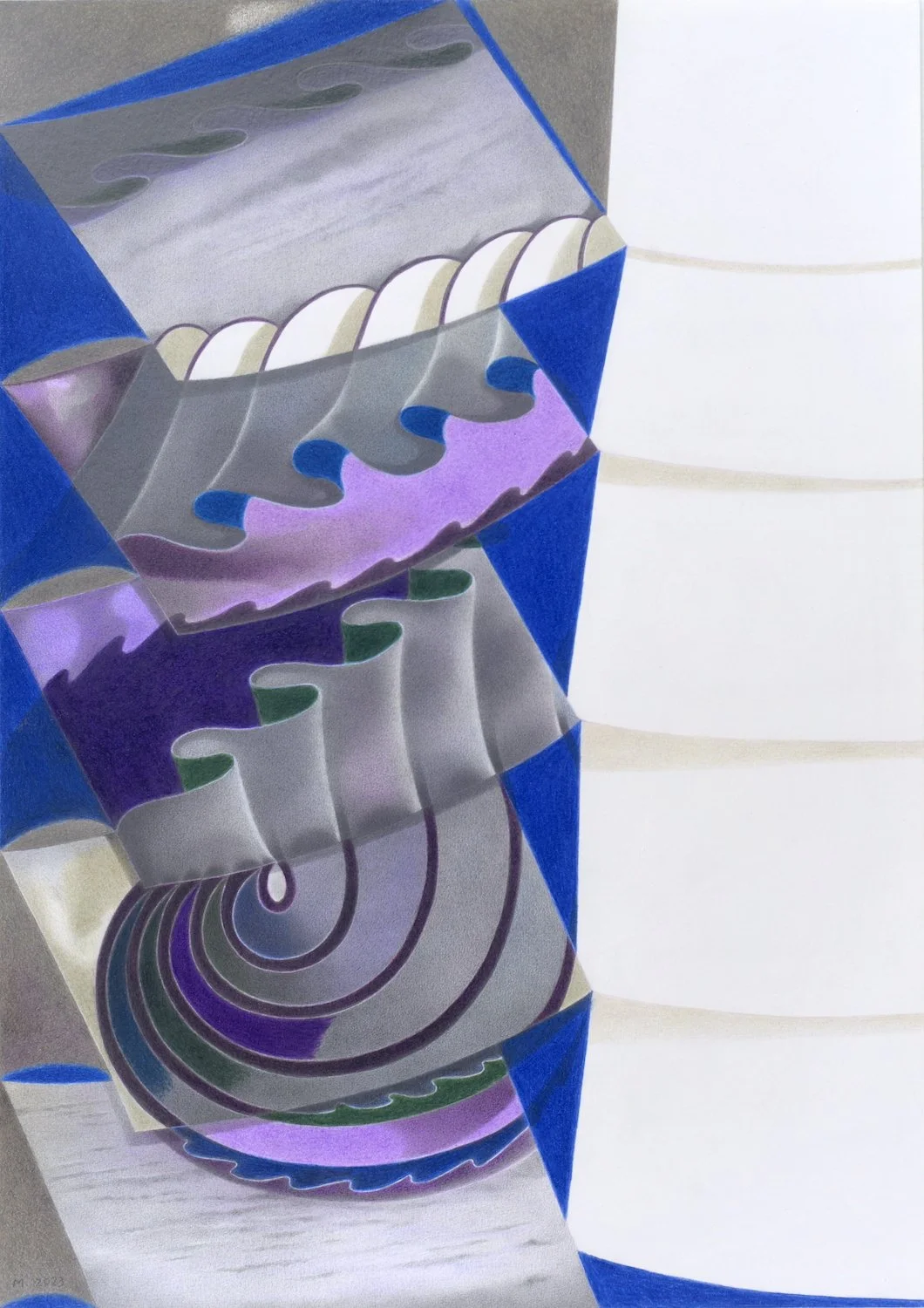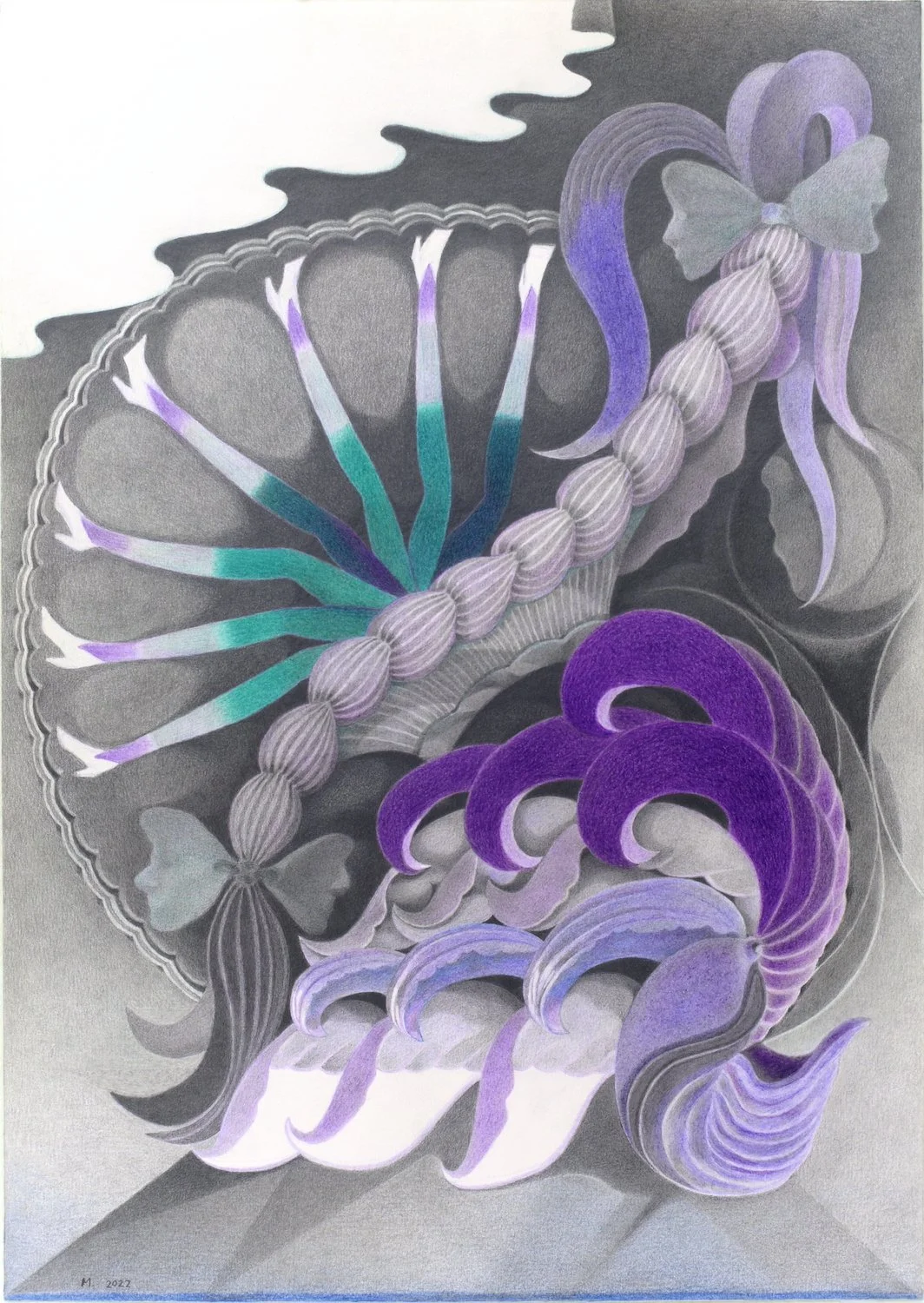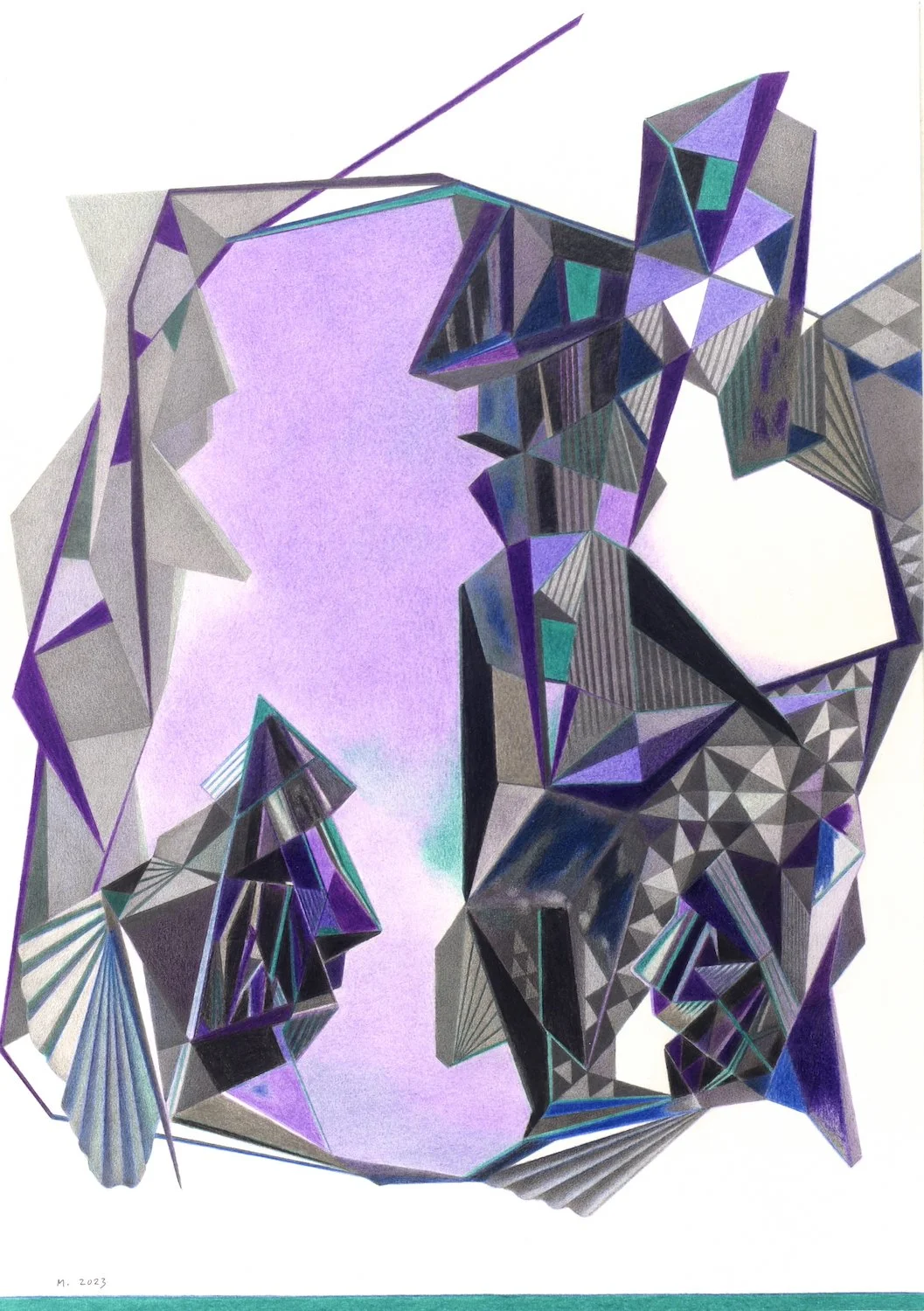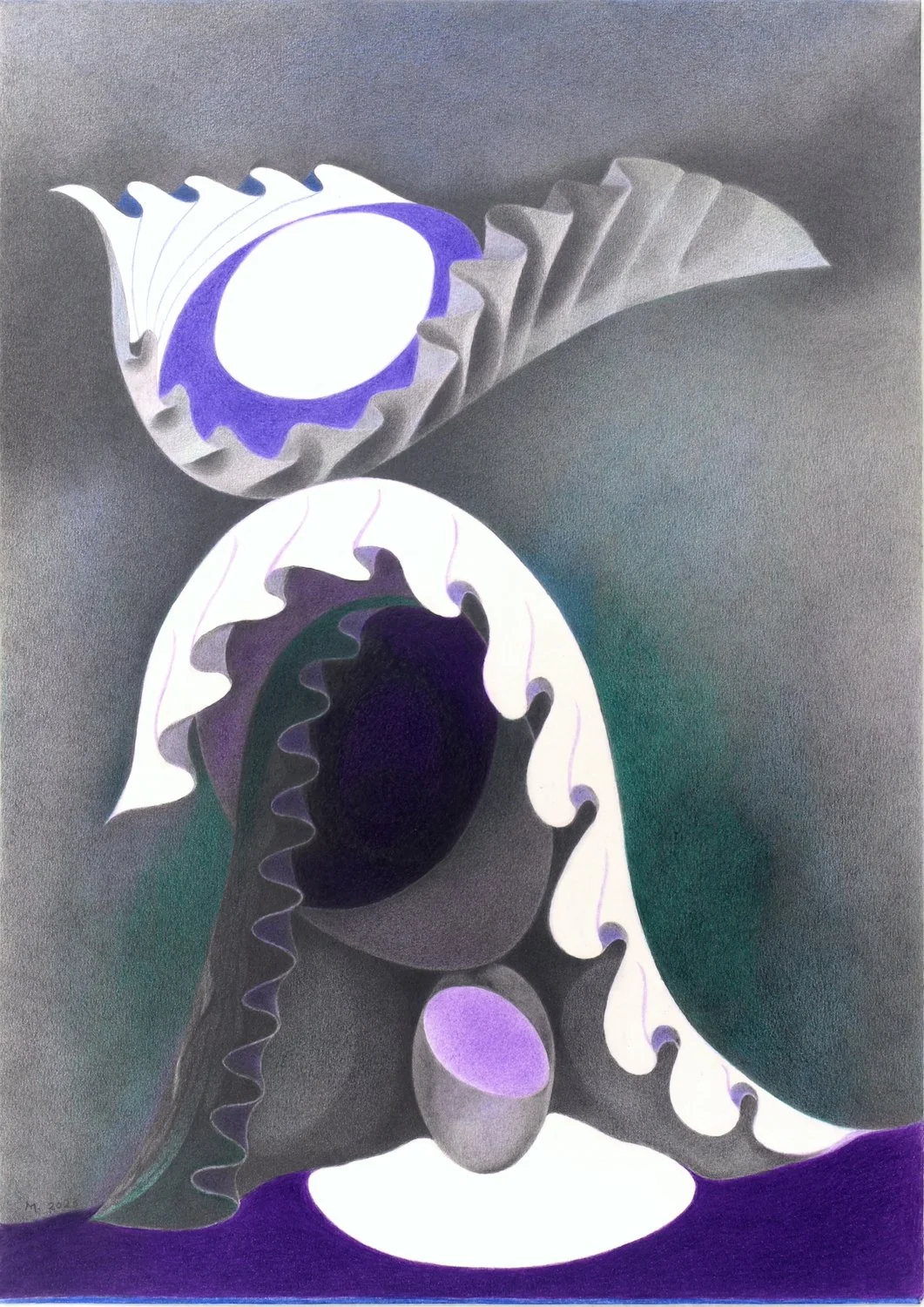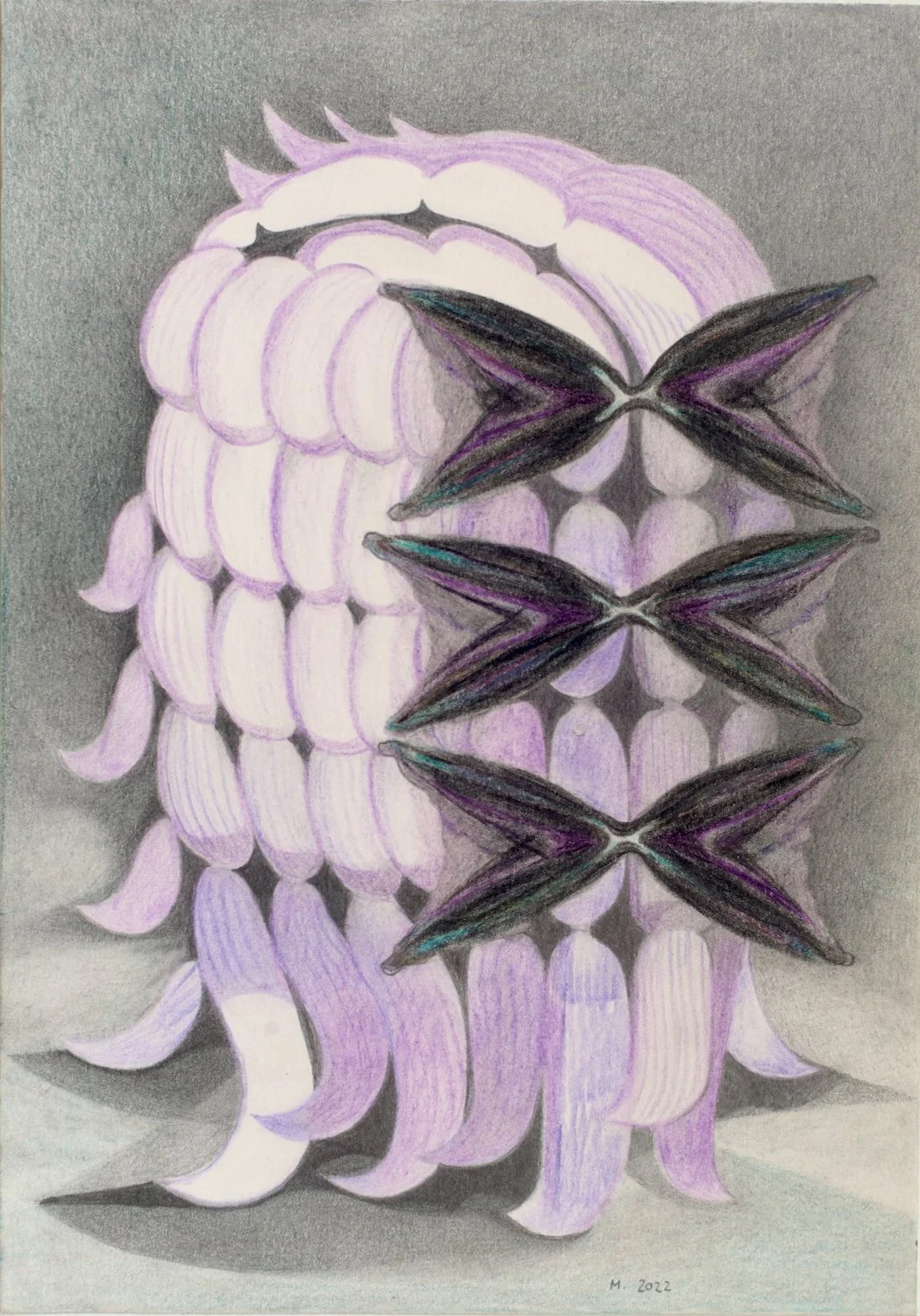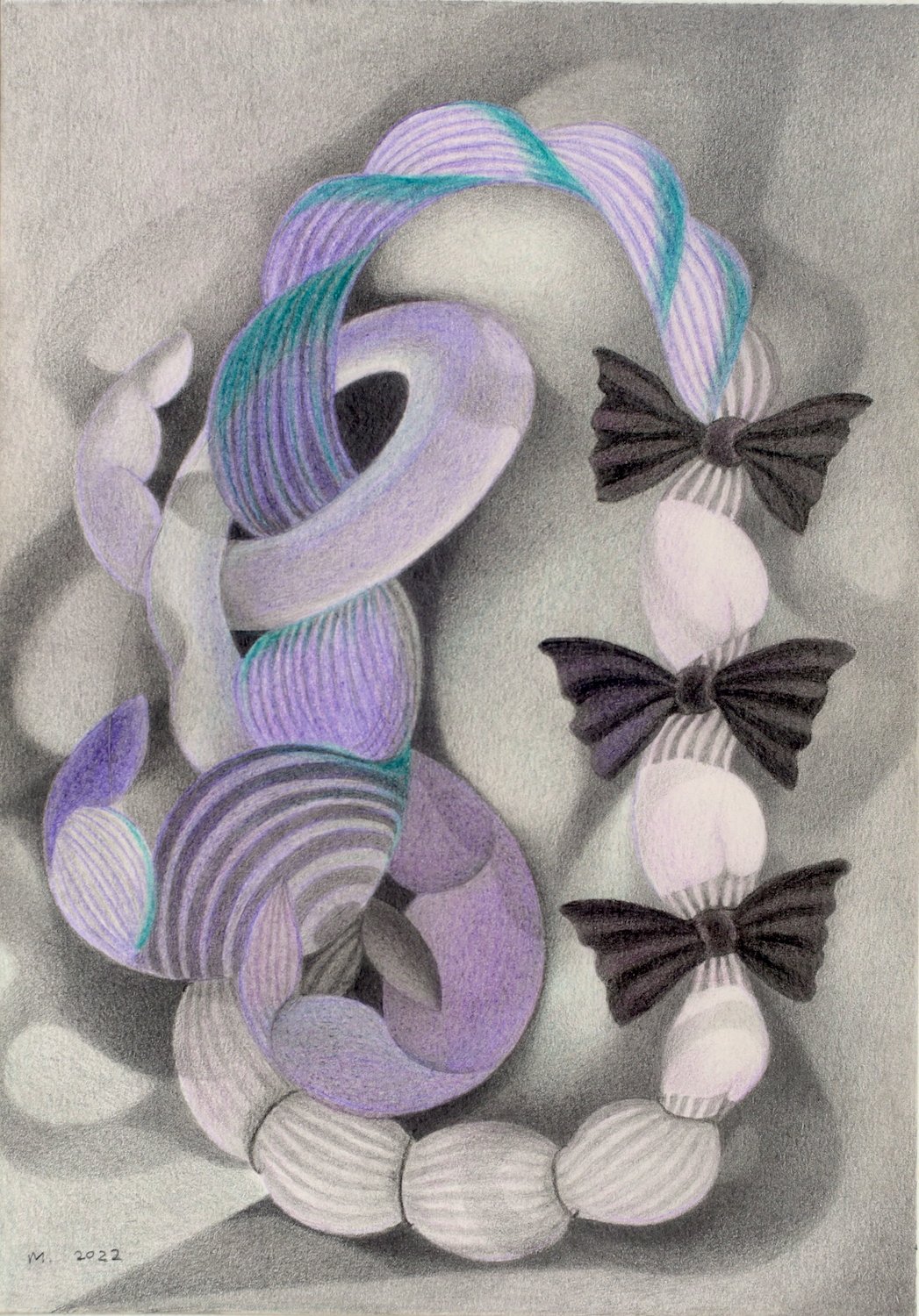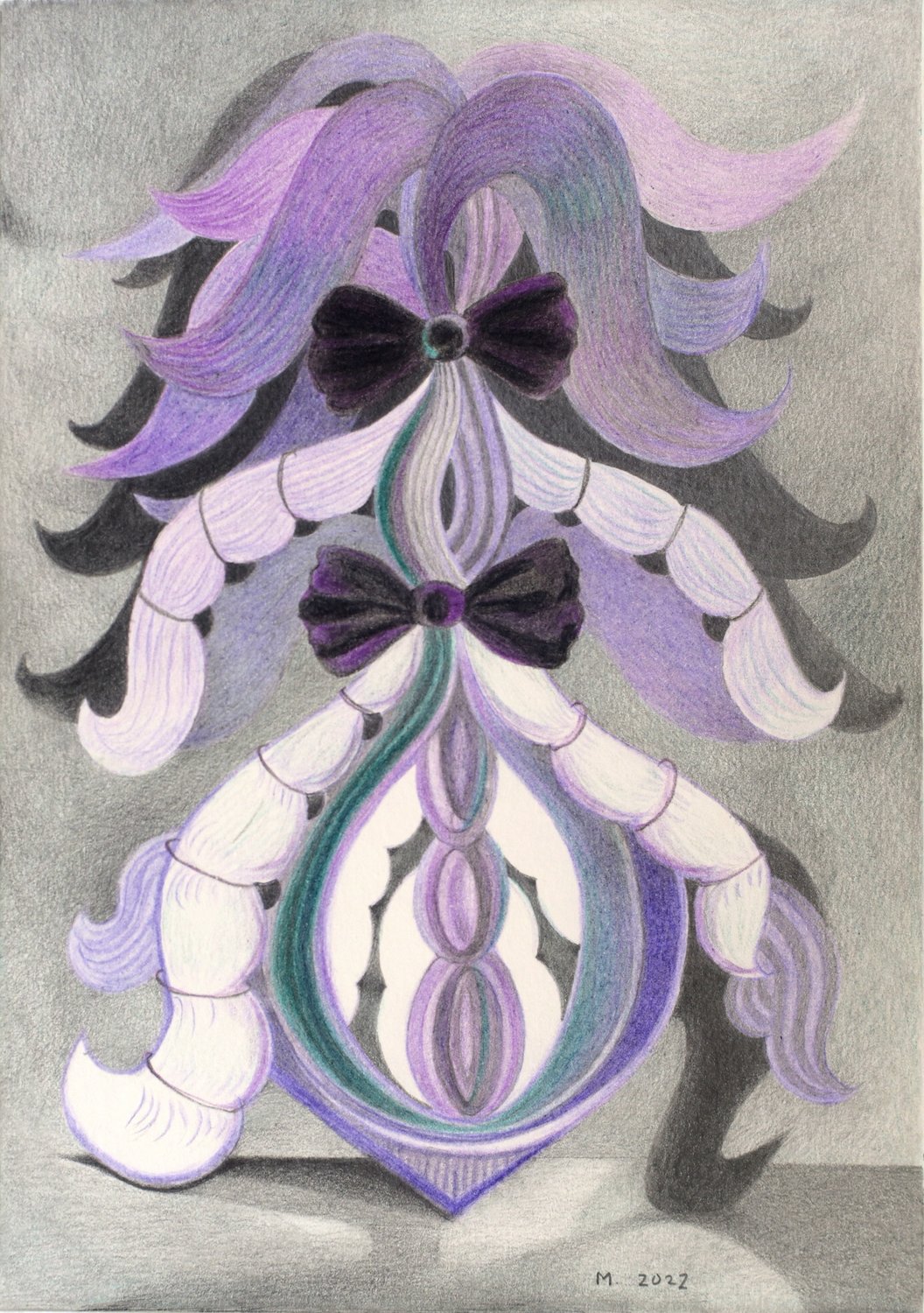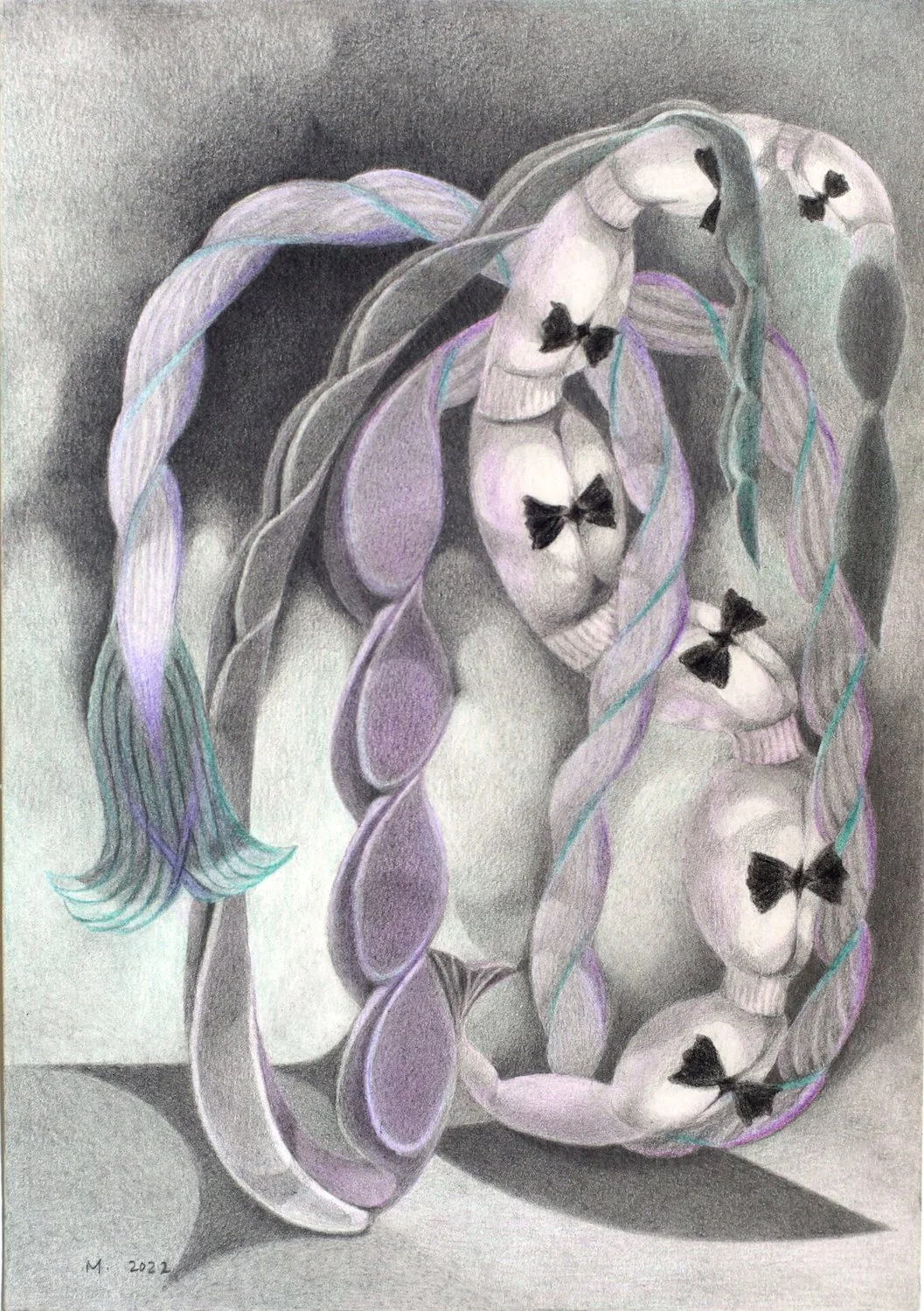The Back Room KL is pleased to announce our next exhibition, Story Time: A solo exhibition by Minstrel Kuik, on view from September 2nd to 24th, 2023. The exhibition will feature a new body of work from mid-career, Malaysian artist Minstrel Kuik in which the artist meditates upon the art-making process. Through a series of 22 colour pencil and graphite drawings engaging with the myth and figure of Medusa, Kuik investigates the deep forms of intuition—feeling and imagination—necessary for acts of artmaking, creation, and storytelling.
Story Time is a significant departure for Kuik who, in recent years, has exhibited mostly photography, mixed-media installations and fabric assemblages with socio-political themes and personal histories. The present exhibition explores literary, mythological, art-historical, and philosophical sources to meditate on how art might be released from the pressure to comment on contemporary issues in a direct or immediate way. In particular, the myth of Medusa, associated with sight, fear, destruction, beauty, and creation, becomes an apt symbol for the examination of artmaking itself.
In these drawings, wigs, frills, ponytails, bows, and heels are repeated as principal motifs and transformed into monstrous assemblages of once-familiar objects. Faces emerge and fade out from view, as if they had been hallucinated into presence. Exploring the potency of images to forge connections between the eye, the hand, and the soul of the artist, Kuik circles in on the idea of picture-making as a cognitive exercise. In particular, she approaches it as a deeply interior process requiring self-reflexivity, feeling, and heightened modes of attention, with the ability to synthesise previous experiences and memories. For Kuik, these discrete practices of perception and habits of mind build towards a robust and true artistic imagination.
Kuik says, “In storytelling, there is a crucial question that concerns everybody across all times: how do we learn from experience? I imagine there are two types of articulations, one from the mind and the other from the heart. Feeling is the anchor that grounds the mind; in feeling, not only is there room for the unknown, but there is also a place of openness to welcome others. And imagination is a powerful tool helping us to break away from the conditioned mind and body, like poetry does to language.”
Opening reception: Saturday, 9 September, from 7 pm onwards
About the Artist
Minstrel Kuik (b. 1976, Pantai Remis, Perak) is a Chinese-Malaysian artist who works across a range of mediums, including photography, drawing, poetry, textile, mixed-media assemblage and installation. Kuik’s practice is interested in the role of experience, memory, women’s writing (Écriture féminine), and pattern-making. She obtained Bachelor of Fine Arts in Western Painting from National Taiwan Normal University, thereafter leaving for the Ecole des Beaux-Arts de Versailles in France for a training in photography. She completed her Master of Fine Arts in photography at the Ecole Nationale Superieure de la Photographie of Arles, before moving back to Malaysia.
Kuik’s works have been exhibited at National Gallery Singapore, Bangkok Art and Culture Centre, ILHAM Gallery Kuala Lumpur, Museum of Contemporary Art Taipei, Photoquai Paris, and Horsham Regional Art Gallery Australia, among others. Her works are in the collections of the Linda Neo and Albert Lim Collection, Michelangelo and Lourdes Samson Collection, Singapore Art Museum, Higashikawa International Photo Festival, Hokkaido, Japan, and the United Overseas Bank, Singapore. In 2014, she was awarded the UOB Painting of the Year (Established Artist Category, Malaysia). Story Time is her tenth solo exhibition.
EXHIBITION ESSAY
Minstrel Kuik: Story Time
By Samuel Lee
“That old co-ordination of the soul, the eye, and the hand,” says Walter Benjamin, “is that of the artisan which we encounter wherever the art of storytelling is at home.” It is apt that the artisan and storyteller are both implicated in Benjamin’s observation, for the interconnection between affect, visuality, and gesture governs not only the art of storytelling, but the storytelling we do about art. In other words, what we say about the practice of artmaking, and how we say it. Such a provocation arises in Minstrel Kuik’s new body of work, Story Time, which is not only a “retelling” of Greco-Roman myths relating to Medusa and the Gorgons, but an extended meditation on the artistic imagination and the mechanics, indeed even of the phenomenology, of artmaking. Across 22 graphite and colour pencil drawings on paper, the series establishes a relationship between the facility of the hand, the observational powers of the eye, and the capacity for sensuousness and feeling by returning to the medium of paper, one more at home in the humanist cabinets of prints and drawings than in the institutional spaces of the exhibition gallery. Echoing Benjamin, Story Time has an artisanal quality to it: for the series, Kuik developed a new technique of shading and colouring, involving a careful, almost obsessive, application of graphite layers scrabbled tightly over underdrawings worked through in colour pencil. This process allowed her to create a range of effects, from a gauzy, diaphanous transparency to a hard-edged, jewel-toned illumination. According to Kuik, there is a special incandescence to the pictures that result from the mixing of colour pigments with graphite, “like light is trapped inside.”
By limiting the range of colours to hues of violet, pink, lavender, and grey, Kuik makes a direct citation of Georgia O’Keeffe’s Petunia No. 2, the American artist’s early experimentation with close ups and scale (Kuik herself tacked a smaller postcard reproduction of the painting above her drawing desk for reference). To arrive at such visualisations, O’Keeffe worked with optical lenses and photography, exploiting the camera’s ability to both represent as well as distort the visual field. Kuik, who studied photography in Arles in the early 2000s, has likewise always been canny about the practice of image making. While projects such as Mer.rily, Mer.rily, Mer.rily, Mer.rily, Part 1 (2008–12) and the Kuala Lumpur Trilogy (2007/2017) evoke the style of “snapshot” photography to document everyday realities, the artist’s interventions in the process of making the pictures point towards the slipperiness of memory and identity. There is a sense that the act of pushing and pulling at the surface of an image, warping our own sensation of its objectivity along with our memory of time past, is ultimately a manual process, if not in actuality, then in effect.
[…]
INSTALLATION SHOTS
Photos courtesy of Kenta Chai.


